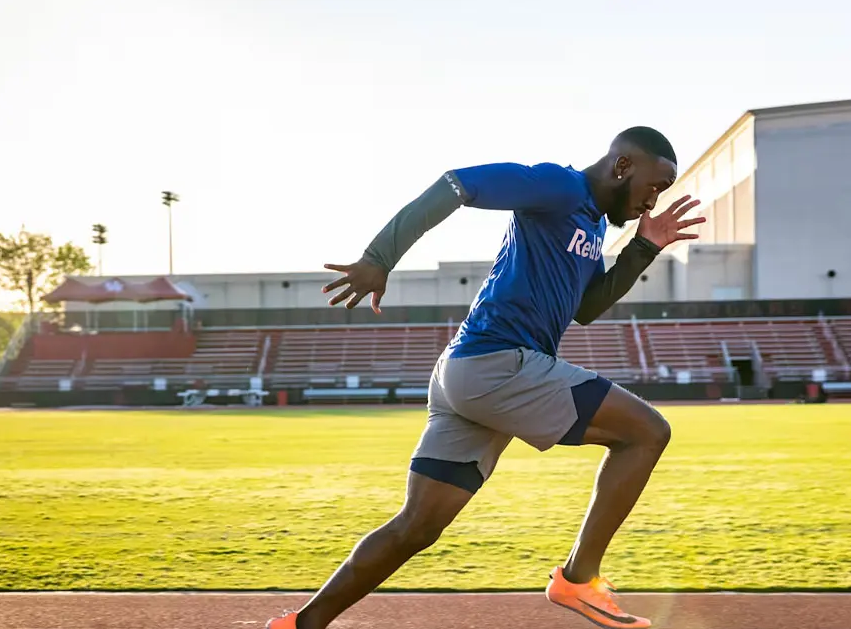How to Improve Speed and Agility for Sports
In competitive sports, speed and agility are two critical attributes that often separate great athletes from good ones.

In competitive sports, speed and agility are two critical attributes that often separate great athletes from good ones. Whether you're sprinting down a soccer field, reacting to an opponent's move in basketball, or dodging defenders in football, your ability to move quickly and change direction efficiently can significantly impact your performance. Understanding how to improve speed and agility for sports involves a combination of targeted training, proper technique, and consistent practice. This blog covers proven methods to enhance your athletic quickness and responsiveness on the field or court.
Why Speed and Agility Matter in Sports
Speed refers to how fast you can move in a straight line, while agility is your ability to change direction quickly and maintain control. Together, they affect:
- Acceleration and deceleration
- Reaction time
- Lateral and linear movement efficiency
- Overall explosiveness and performance
Whether you're a runner, fighter, or field athlete, these physical traits directly influence your ability to outmaneuver opponents, reach the ball first, or avoid injury during play.
Key Components of Speed and Agility Training
Improving speed and agility for athletes requires focusing on several fundamental components:
- Neuromuscular coordination
- Explosive power
- Strength-to-weight ratio
- Footwork and balance
- Reaction time
Training these elements together creates a well-rounded, agile athlete capable of executing movements fluidly and at high intensity.
Best Exercises to Improve Speed and Agility
1. Sprint Drills
Short sprints are foundational for developing acceleration and top-end speed.
- 10- to 40-yard sprints: Build fast-twitch muscle fibers
- Flying sprints: Improve stride length and frequency
- Hill sprints: Enhance explosive power in the legs
- Resistance sprints: Use sleds or parachutes to build strength
2. Ladder Drills
Agility ladder exercises are excellent for improving foot speed, coordination, and body control.
- Two-feet-in: Focuses on fast, compact steps
- Lateral shuffles: Enhances side-to-side quickness
- Icky shuffle: Boosts rhythm, agility, and neuromuscular control
3. Cone Drills
Cone drills help athletes react quickly, pivot efficiently, and change direction with control.
- T-drill: Emphasizes forward sprinting, lateral movement, and backpedaling
- Pro-agility shuttle (5-10-5): Sharpens lateral movement and acceleration
- Zigzag drills: Improve ability to cut and maintain speed during turns
4. Plyometric Training
Plyometrics develop the power needed for explosive movement in all directions.
- Box jumps: Increase vertical leap and leg power
- Bounding drills: Promote stride length and coordination
- Lateral jumps: Enhance side-to-side explosiveness
- Depth jumps: Train reactive strength and landing control
5. Resistance and Strength Training
Improved muscular strength enhances force production, which directly translates to faster movement and better agility.
- Deadlifts and squats: Build lower body power
- Lunges with resistance: Target stability and leg strength
- Core strengthening: Engages the torso for better posture and balance
6. Balance and Stability Work
Staying stable through rapid movements is essential for sports agility.
- Single-leg stands: Train ankle and knee stability
- Balance board exercises: Challenge core and joint control
- Dynamic stability drills: Combine movement and balance for real-world simulation
Sample Speed and Agility Workout Plan
Here’s a weekly plan to help you integrate these methods:
Day 1: Sprint Technique + Plyometrics
- Warm-up: Dynamic stretching
- A-skips, high knees, butt kicks
- 5x20m sprints
- 3x10 box jumps
- 3x10 lateral bounds
Day 2: Ladder + Cone Drills
- Warm-up: Mobility + jump rope
- 4 ladder variations x 2 rounds
- 3 T-drills, 3 shuttle runs
- Core finish: Planks, Russian twists
Day 3: Strength + Balance
- Warm-up: Foam rolling + mobility
- Squats 4x5, Lunges 3x8 per leg
- Single-leg deadlifts 3x6
- Balance board: 3x30 sec holds each leg
Day 4: Reaction and Game Simulation
- Light agility warm-up
- Partner reaction drills (cone taps or mirror drills)
- Sport-specific cutting or sprinting patterns
- Cool down and mobility work
Tips to Maximize Results
To get the most from your speed and agility training, consider these expert strategies:
- Warm up properly before every session to avoid injuries
- Focus on form, especially during sprint drills and plyometrics
- Gradually increase intensity and complexity of drills
- Train consistently, aiming for at least 2–3 sessions per week
- Record performance (times, reps, distances) to track progress
- Prioritize recovery, using rest, hydration, and stretching to avoid overtraining
Common Mistakes to Avoid
When training for sports speed and agility, many athletes make mistakes that limit their gains:
- Skipping mobility work: Tight muscles lead to inefficient movement
- Doing too much too fast: Build up gradually to avoid injury
- Neglecting strength training: Power is essential for fast movement
- Lack of variation: Incorporate new drills to challenge your nervous system
- Poor footwear: Train in shoes appropriate for your sport and surface
The Role of Nutrition and Recovery
To truly improve speed and agility, you must support your body with proper fuel and rest:
- Eat high-protein meals to support muscle repair and growth
- Stay hydrated to maintain performance during intense drills
- Use electrolytes to prevent cramping and muscle fatigue
- Get 7–9 hours of sleep each night to maximize recovery and adaptation
- Incorporate active recovery (like swimming or light cycling) on off days
Conclusion
Learning how to improve speed and agility for sports is a game-changer for athletes in any discipline. By focusing on technique, incorporating proven drills, and training consistently, you can build the quickness and control needed to outpace and outmaneuver the competition. Whether you're aiming for faster sprints, sharper cuts, or quicker reactions, targeted speed and agility training delivers noticeable performance improvements. Train smart, stay disciplined, and you'll see results on the scoreboard and the stopwatch.